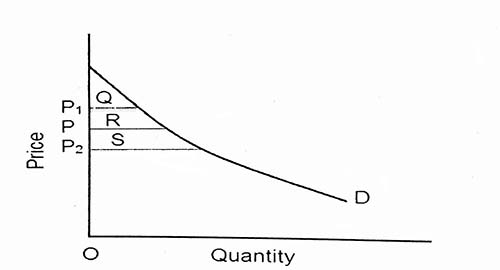Consumer’s Surplus is one of the most important concepts in Economics. It was expounded by Alfred Marshall. It needs careful study. In our daily expenditure, we often find that the price we pay for a commodity is usually less than the satisfaction we derive from its consumption. In our own mind, sometimes we are prepared to pay much more for a commodity than we actually have to pay. People are often heard saying, “i would have paid much more for it rather than go without it.” This means that he has made a saving or derived extra satisfaction over and above the money he has paid.
In some cases, the idea Of consumer s surprise is quite obvious, e.g., a packet of salt, a post-card, a newspaper, a match-box, etc. These things are very useful, but they are also very cheap. We are, therefore, prepared to pay much more for them, if need be, than we actually have to pay. From their purchase, therefore, we derive a good deal of surplus or extra satisfaction over and above the price that we pay for them. This is consumer’ surplus.
Consumer’s surplus is the excess of what we are prepared to pay over what we actually pay for a commodity. It is the difference between what we are prepared to pay and what’ we actually pay. Thus, Consumer’s surplus = what one is prepared to pay minus what one actually pays.
Consumer’s surplus by using indifference curve
There is an inverse relationship between market price and consumer’s surplus. An inverse relationship means that a decline in market price increases consumer’s surplus and vice-versa.
In figure, when the market price for the commodity under consideration is OP, the areas Q and R are consumer’s surplus. If there is an increase an increase in the market price (OP1), the area Q will represent consumer’s surplus. Note that there is a loss of consumer’s surplus equivalent to area R. When the price decreases (OP2), consumer’s surplus increases (area Q + area R + area S).










